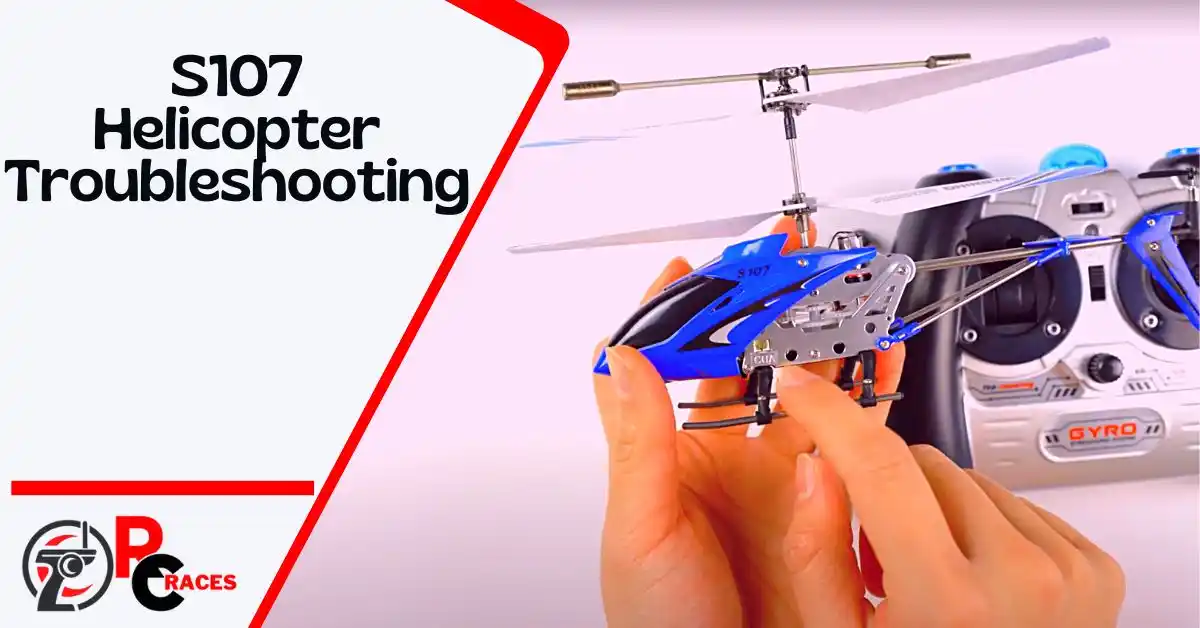Introduction
Remote control helicopters have always fascinated people and the s107 is definitely a popular one.
However, people often struggle while solving some common problems that they encounter. We totally get it if you are looking for similar solutions as well.
So, how can you execute s107 helicopter troubleshooting?
Here, we will be troubleshooting 5 common problems with the S107. First, we will troubleshoot battery issues. Then, we will be fixing connector problems. After that, we’ll solve overheating starters and malfunctioning switches. Finally, we’ll look into troubleshooting an S107 that won’t start.
This is just an overview of what we have in store for you. You will need much more information to be troubleshooting these common problems. This article will give you an in-depth idea of how you can easily troubleshoot an S107.
So, what’s holding you back? Let’s dig deep into it, shall we?
Troubleshooting 5 Common S107 Problems!
In this section, we will be discussing these problems that you may commonly encounter. We will also be covering how you can solve them. You can troubleshoot your sky rover similarly!
Problem 1: Connector Issues
Connectors are likely the most underappreciated part of the starting system. They are in charge of providing essential electrical connecting linkages between components.
Their ease of use conceals their vulnerability to wear, improper handling, and corrosive degradation.
It is crucial that every connector in the main rotor starter unit be frequently tested.
To be very honest, the whole electricity grid should be looked into for symptoms of wear, strain, or corrosion. These occur due to all the factors that are acting against optimal connector effectiveness.
Troubleshoot
Each connector is carefully inspected for heat browning, faulty wiring, physical damage, and corrosion accumulation.
The engine-bonding belt is an often disregarded source of corrosion. This essential component must undergo regular checks on both sides.
Using a Volt-Ohm gauge, the circuit should then be examined for electrical stability. The threshold limit for bonding or ground connections is a resistance of no more than 0.2 ohms.
Any connection with corrosion must be taken out and carefully cleaned. The discoloration is an indication of a serious issue. It might indicate overheating brought on by an exponential rise.
To lessen the likelihood of repeated damage, worn or damaged connections really should be changed. Also, make sure to have them torqued to the appropriate values.
Any connection that is overtightened will experience heavy mechanical stress. It could also follow irreversible wear and tear, and joint failure.
This works great for any propel helicopter troubleshooting.
Problem 2: Overheating Starters
Another often occurring factor in a number of starting issues is overheating.
Overcranking the starter without giving it adequate time to cool between starts is the main cause of overheating in most cases.
The suggested duty cycle, which varies depending on the starter, usually comprises an engagement of 10 seconds and a cooldown of at least 30-second.
Normally, the above process can be done at most three times. The starter must then take a minute or more to relax.
Some contemporary starters feature reduced duty cycles that enable an endless amount of starting attempts within an ignition of 10 seconds accompanied by a 20-second break.
Usually, pilots are unaware that by repeatedly deviating from the starter’s duty cycle, they risk permanent damage.
The starter’s contactor, stator, and brushes may be damaged and drastically shorten their usable life.
Troubleshoot
Regularly check the starter’s power supply unit. Look out for symptoms of wear and tear, contact security, corrosion accumulation, and overheating.
This generally comes as discoloration near the conductors. Again, you’re aiming for a maximum load drop of 0.5 volts and a max resistance of 0.2 ohms. Worn connections are a problem that is sometimes mistaken for a starting issue.
Adhere to the manufacturer’s servicing recommendations for investigating and fixing the probable broken solenoid.
Check the starter’s gearbox on a regular basis for wear, dents, nicks, fractures, or gouges.
Follow the maintenance recommendations provided by the manufacturer if some of these circumstances exist.
Kickback problems are frequently remedied by modifying the engine’s fuel and combustion systems. It can also be fixed by the pilot’s “modification” of engine commencing procedures.
When altering the system’s configuration or starting processes, always adhere to the OEM’s recommendations.
Problem 3: Malfunctioning Switches
Corrosion on the connection endpoints and internal conductor are the switch’s most frequent problems.
Electrical sparking develops between the moveable and fixed contacts while the contactor keeps opening and shutting. Over time, this degradation will raise the circuit’s resistance, which might eventually cause it to cease functioning altogether.
The switch is a frequent contributor to subpar “starter” performance. This is because of its mechanical design and the ongoing deterioration of the contact material.
The power required by the starter to effectively power the engine can be taken away by a worn switch, which can lose multiple amps of electrical potential.
Troubleshoot
Examine the exterior electrical components of the switch for corrosion and wear. Parts showing deterioration should be changed, and any rust should be cleansed carefully.
Check for any indications of thermal discomfort. It might be a symptom of unit degradation or a malfunctioning control coil. It is advisable to change the component if thermal discomfort is present.
Get a VOM to measure the electrical drop from across switched connections with the switch under load. Make sure to have both magazines grounded and the fuel off.
The typical decline should be around 100 mv (0.1v). Larger voltage dips might be a sign of worn contacts.
It is important to look into any drop in voltage of 0.5 volts or more that occurs anywhere in the system. This doesn’t apply to the starting itself.
Problem 4: S107 Won’t Start
This is when you switch on your S107 after charging it, but there are no lights flashing. It is one of the most common problems that users face with their S107.
There are two possible culprits behind this issue. For these reasons, the air hog helicopters don’t charge sometimes too!
The first one is a dead battery. It is the culprit in most cases.
The second culprit could be a faulty circuit board. It’s kind of a rare incident. However, if it’s not the battery that’s dead, it’s most definitely the circuit board.
Troubleshoot
Too many fast charges and discharges might have killed the battery. Additionally, the circuit board’s battery cables could have been damaged or detached.
To change the battery or rejoin the cables, refer to the Syma S107 Battery Replacement instructions.
Here are some recommendations for quality batteries for your S107 helicopter:
| Product 1 | |
| Product 2 |
We hope that you will enjoy using these options.
The circuit board could be defective from the manufacturer or reverse biased. To replace one, adhere to the instructions in the Syma S107 Circuit Board Replacement Guide.
FAQs
Which one is the number 1 Syma Helicopter Model?
Currently available on the market, the Syma S107G 3 Channel RC Helicopter is unquestionably the finest. It comes with a greater initial crash rate and an absence of manual dexterity for carrying out tighter maneuvers. This makes it the ideal model for novices. It takes a very short time to recharge as well.
Is Syma a reliable RC Heli manufacturer?
The Syma S107G is the greatest RC helicopter on everyone’s list and one of the most reasonably priced. The Syma requires no installation and is ready for takeoff outside the box after less than 30 minutes of battery charging. Even for complete beginners, using the controller is simple.
How much time does it take for the S107 Heli to charge?
Charging for 30 to 40 minutes is enough. Avoid overcharging the helicopter and avoid leaving it plugged in for longer than an hour. Be sure to shut off the helicopter. Otherwise, it won’t get charged.
End Note
That’s all we have on fixing the common problems in a Syma S107 helicopter. Hopefully, now you will be able to execute s107 helicopter troubleshooting with ease.
Make sure you connect all the points before checking if it is fixed or not.
We will see you in another interesting article very soon. Till then, have Safe Flights!


